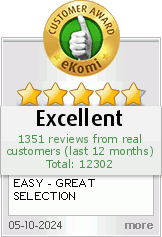Bird Feeders: Tips for Success

Bird Feeders: Tips for Success
Like any other endeavor that involves caring for wild animals, bird-feeding requires a little bit of planning to ensure that the experience is beneficial not just to the birds but to you as well. Your bird-feeding efforts will be successful if you know your avian friends and what, where, and how to feed them.
Determine Bird Groups and Habits If you are relatively new to your area, do quick research on what types of birds frequent your locality. What flocks tend to pass through at specific times of the year? Are these small or large birds? Do they come around a few at a time like woodpeckers, grosbeaks, and cardinals? Maybe they feed in groups, like chickadees and goldfinches. Armed with the knowledge of what specific birds will be around to feast on your offerings, you can plan what types of food and feeders to install. But because an assortment of bird species will likely gather around your feeding station, you might want to consider putting up one feeder for large flyers like jays and grackles and another for tiny birds such as warblers and sparrows. This way, the large birds do not overwhelm the tiny ones or dominate the entire feeder. Also, familiarity with birds’ feeding styles will help you decide what type of feeder you should put up. Jays have the tendency to scatter the seeds as they peck for food, so an open or platform feeder will result in most of the seeds ending up on the ground. Finches and sparrows love millet and black-oil sunflower seeds, which can be served through a simple hanging fine-netting tube. If hummingbirds are attracted to flowers in your community, you can hang feeders specifically designed for their unique feeding style. Once you’ve figured out what birds you want to attract and feed, you can start planning the details of your bird-feeding station. Start with where this feeding station is best located.
Choose the Best Spot An important factor in choosing the best spot for feeding birds is vantage point. Install your feeders where you can watch and appreciate the birds that fly in for dinner. It could be just outside the window of the family room where the children hang out. A good location would be across the porch where you lounge with your binoculars or camera. Anywhere in the backyard where birds can be comfortable in a natural setting would also be ideal if you have a clear view of the gathering of beautiful birds. Another factor to consider is predators. Cats will be attracted to the visiting birds; find a location that will not be accessible to outdoor felines. If cats are not a threat, certainly, squirrels are. These furry creatures are very aggressive in foraging for bird seeds. They will climb, jump, leap, and almost fly to get to their next treat. Hanging feeders should be at least six feet away from the nearest ledge, tree branch, or rooftop, which could easily be a hungry squirrel’s jump-off point. Feeding stations planted on the ground should have a smooth metal post with baffles to prevent unwanted guests from clambering up to the goodies. And finally, consider exposure to the elements. Most feeder designs include roofing or an umbrella-type protection from an unexpected downpour. But even so, a good place to hang feeders would be under an overhang that will always shelter the station from getting wet.
Make Your Own or Buy Them Ready-to-Feed Now you ask yourself, “Should I make a feeder or buy one?” The Internet is your friend when it comes to inspiration for handmade feeders. Ideas include hanging a spiral orange peel or a large pine cone slathered with peanut butter and rolled in bird seed. A block of suet covered in seeds and hung with a net would be a yummy treat for nuthatches and titmice. If you love to recycle, a popular bird feeder project repurposes a liter soda bottle by punching a few holes on the side for dispensing the seeds. You will also find countless bird feeders and bird-feeding alternatives through your favorite pet stores, florists, craft shops, and home improvement retailers. You can choose from basic plastic shelves (that you simply stick onto your glass window) or industrial-strength metal feeders (that are spring-loaded to deter squirrel attacks). There are Victorian-inspired multiple-hanger feeding stations complete with bird baths, as well as seed-covered edible birdhouses that you can reseed year after year.
Be a Responsible Feeder of Birds The final consideration for successful bird-feeding is responsibility. Protect your feeders from moisture, which grows hazardous molds and mildew. Tidy up feeders in between refills by brushing off dust and cobwebs. Birds will learn to rely on your treats, so refill the feeders promptly and provide only clean and fresh food that will keep your avian friends healthy and coming back for more.
More information about the author:



